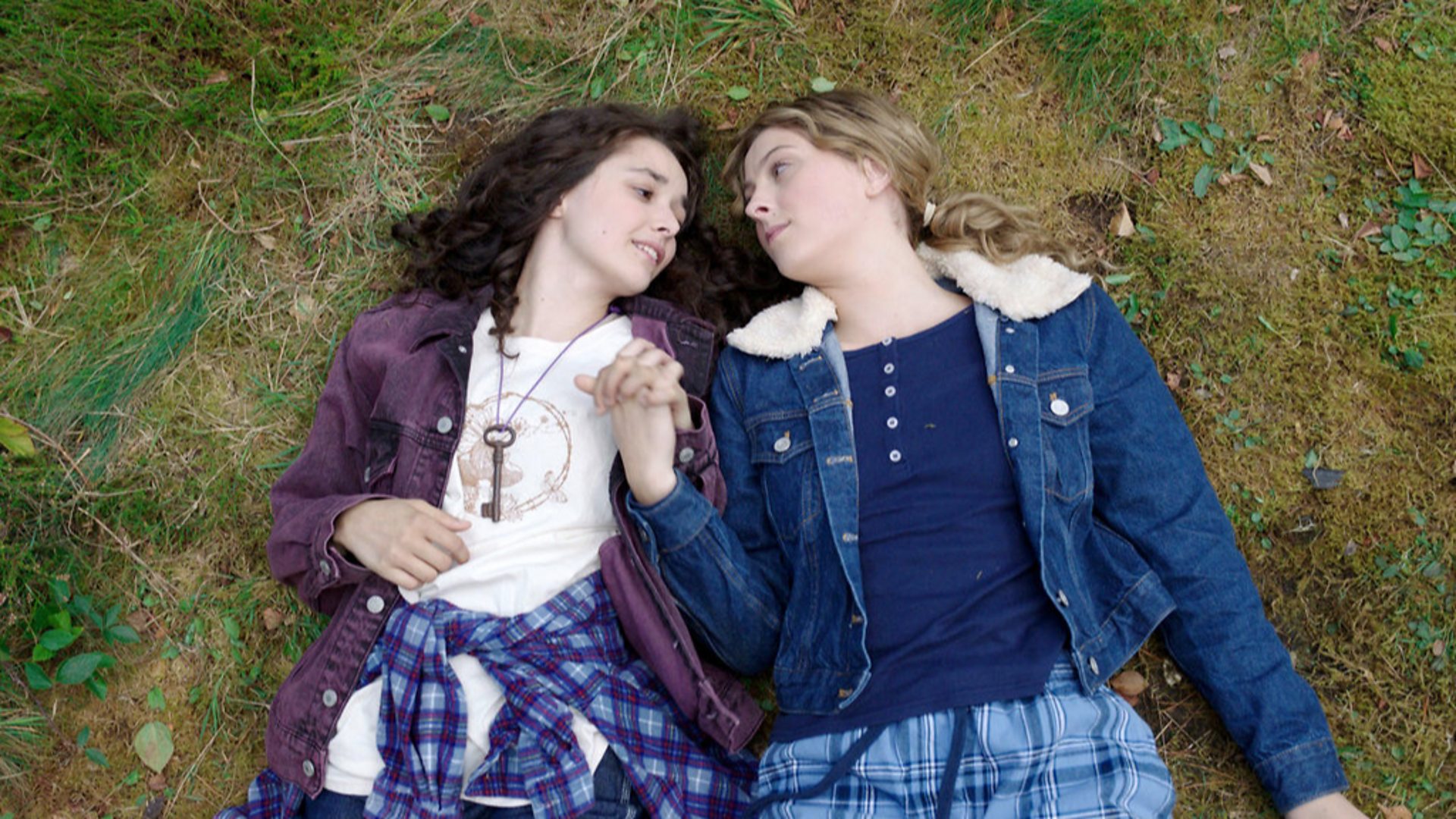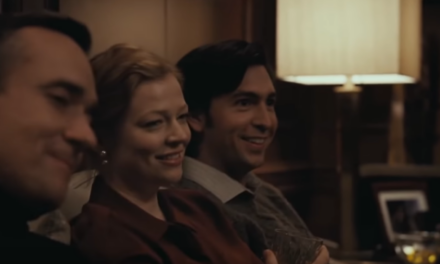This month the University of Stirling published the largest ever study of autistic people’s research priorities (Cage, E et al, 2024) finding that they wanted research to focus on mental health and support rather than ‘cure’. In other words, autistic people want their lives to be valued and supported as they are, not to have the sides shaved off their square pegs so that they will fit into a round hole. This is a point made with joyful eloquence in the BBC Children’s drama, A Kind of Spark (2023), which tells the story of Addie, a teenage autistic girl determined to gain justice for the ‘witches’ in her village who were killed for being different centuries ago. Based on the award-winning novel by autistic writer, Elle McNicoll, the story is about ‘sisterhood, neurodiversity and standing firm in the face of the mob.’[1] Addie faces bullying from children and adults in the show but knows that her neurology is her strength not her burden.
As an academic, I’ve given countless lectures on the affective power of television to connect us and help us experience the world through different eyes, but actually feeling that connection is still a shocking sensation. This was the case when my own autistic teenage family member watched the show with me. In a pivotal scene, Addie prepares for her first day at secondary school with her big sisters, Keedie (autistic) and Nina (neurotypical) giving her tips and offering support as she steps into new territory. As she enters the school, the camera mimics her point of view, swooping and swirling, while sound is distorted as corridors close in and pupils flow around her. Addie is experiencing sensory overload -a situation in which the senses are taking in more information than the brain can process. Practicing the self-soothing techniques Keedie has shown her, she finds her way to the relative calm of her classroom. Vibrating with an excitement born of recognition, my viewing partner turned to me and said, ‘that’s how I feel at school’.
A Kind of Spark is groundbreaking both in its content and its mode of production, featuring neurodivergent actresses in neurodiverse and neurotypical roles. The actresses playing Addie, Keedie and Nina are all autistic and many other roles are filled by neurodiverse actors. Much[2] has been written about the importance of the storyline’s nuanced and joyful depictions of neurodiversity on screen, and the plethora of awards as well as the excitement of young fans on CBBC’s chat pages are testament to its success. But what really interests me is what happened behind the scenes to bring the story to life on our screens. As Anna Zoellner notes, the ‘the initial stage of television production establishes the aesthetic and narrative parameters for the final on-screen representations’ (2022, 585)’. This is definitely the case with A Kind of Spark. The visceral depiction of Addie’s sensory overload, along with the story’s celebration of the power of difference is a result of 9 Story Media Group, the production company responsible for the adaptation, working closely with McNicoll to put care for cast and crew at the heart of its production schedule. This might seem like the most obvious and basic of requirements but is in fact a radical departure from the toxic working conditions which are industry standard. Long hours, stress, lack of downtime, and bullying are all well-documented factors of television production (Wilkes, M., Carey, H. & Florisson, R, 2020, Van Raalte, C, Wallis, R & Pekalski, D, 2021). Indeed, the current mode of production constantly forces workers into fight-or-flight mode, working in a state of stress, panic, and even anger in the rush to get a programme made under budgetary and scheduling restraints. Unsurprisingly, a shockingly high proportion of workers experience burnout and mental health problems (Wilkes, M., Carey, H. & Florisson, R, 2020). As Eikhof and Newsinger (2020) note, industry responses to these issues often focus on empowering the individual rather than seeking to reform industry practices. 9 Story flipped this approach, putting neurodiversity at the heart of the casting and production process and making adaptations at every stage to meet the additional requirements of neurodiverse workers. Their plan was to incite change across the industry by implementing easy, practical initiatives that proved that filming conditions don’t have to be hazardous or toxic.
These changes took place right from the start; one of McNicoll’s stipulations for selling the rights to her book was that 50% of the cast and crew of the adaptation had to be neurodiverse.[3] While many companies claimed that this would be impossible to commit to, 9 Story rose to the challenge, prioritising neurodiverse talent in casting and actively recruiting neurodiverse crew. The production team found that crew were often worried about disclosing information about their neurology because traditionally the model of production is to exclude workers on the basis of gender, race, class and disability (Randle & Hardy, 2016). 9 Story realised that the onus was on them to break this model and so they hired a neurodivergent director along with Heads of Department who were happy to disclose their neurodiversity and to inform best practice in their departments. This approach to casting and recruitment was more than a box-ticking exercise. In order to ensure that the working environment was inclusive, the company asked neurodiverse workers what they needed to feel comfortable on set and acted on this information. Adjustments included providing ear defenders and limiting noise on set by switching off studio buzzers. A quiet space was available at all times and filming was adjusted immediately if any of the cast showed signs of meltdown, burnout, or sensory overload. Neurodiverse cast who experienced sensory issues were given extra time to get used to the textures of their costumes and to acclimatise to the sets. The actresses playing Addie, Keedie, and Nina were all consulted on costume choices and set layouts so that they would feel comfortable during filming. They were also assigned hair and makeup artists who would work with them throughout the shoot to ensure familiarity with the process. [4]
9 Story promoted clear communication and consideration on set, ensuring that creative and directorial teams were fully briefed about additional requirements. They also created a language guide document explaining key terms around neurodiversity and disability and produced easy to read daily call sheets with information about the next day’s filming presented in plain language so that no one felt overwhelmed or confused. Radically, the company also aimed for as many scripts as possible to be completed before filming started. If scripts weren’t ready, the writing team worked closely with the actors and crew to guide them through upcoming storylines so that they knew what to expect. Shooting was scheduled in chronological script order whenever possible so that neurodiverse cast would not have to deal with last minute rewrites and revisions or confusing timelines. This had a knock-on effect that benefited all cast and crew. Because the scripts were locked down as much as possible before the start of filming, crew could prepare properly for each day of filming, rather than having to scramble to redesign sets and find costumes for filming last minute changes. The production also built in rest times throughout the day and finished each day on time, even if the schedule had not been completed, to ensure that neurodiverse cast and crew were not forced into a state of hyper or hypo arousal, causing a meltdown or shutdown. In an industry infamous for its high rates of poor mental health caused by the stress of long hours and constantly changing schedules, these basic changes were revolutionary.
In an interview for the BBC[5], McNicoll highlighted the importance of positive representation of autism on screen, saying,
Autistic women and girls are massively underrepresented in all factions of media and art.. I wanted characters, on the page and on the screen, who can make vibrant, bright and lively autistic girls and young people feel that their way of being is something to celebrate and find joy in.
When asked why it is so important for neurodivergent children to see themselves and their lives represented on screen, she replied,
because we don’t ask if neurotypical children need to be seen. They just are. They are considered the default. And those who are considered the default have been the central character in every narrative for a very long time.
In an industry that has the power to tell transformative stories but also to exclude and harm workers, McNicoll’s words are a reminder that change is necessary. And 9 Story has shown that is possible. By listening to and prioritising the wellbeing of the cast and crew of A Kind of Spark, they have created a rich, complex, and joyful story that’s changing not only the narrative about neurodiversity but also about good practice in programme-making. 9 Story don’t claim to have solved all the problems with inclusion on and off screen, noting that they are still learning all the time. But they prove that where there is the will there is definitely a way.
Series 2 of A Kind of Spark is currently in post-production.
Additional information about filming A Kind of Spark kindly given by 9 Story.
Mhairi Brennan is a Research Associate at Aston University working on the AHRC-funded ReCARE TV project. She has previously worked in television production and as a lecturer in Television and Screen Industries. Her research interests include television production and archival practices, and her first monograph, Archiving the Referendum: BBC Scotland’s Television Archive and the 2014 Scottish Independence Referendum,will be published by Palgrave Macmillan in 2025.
Footnotes
[1] https://bbc.com/mediacentre/mediapacks/a-kind-of-spark.
[2] https://theguardian.com/tv-and-radio/2023/apr/11/a-kind-of-spark-autistic-led-cbbc-show.
[3] https://9story.com/a-kind-of-spark-shortlisted-for-2024-broadcast-awards/.
[4] https://youtube.com/watch?v=ZqRCQGgIMC4
[5] https://bbc.com/mediacentre/mediapacks/a-kind-of-spark.
Works Cited
BBC Media Centre (2023), ‘A Kind of Spark author Elle McNicoll: It’s a story of sisterhood, neurodiversity and standing firm in the face of the mob. Available at: https://bbc.com/mediacentre/mediapacks/a-kind-of-spark.
Cage, E, Crompton, J.C, Dantas, S, Strachan, K, Birch, R, Robinson, M, Morgan-Appel, S, MacKenzie-Nash, C, Gallagher, A, and Bot, M (2024) ‘What are the autism research priorities of autistic adults in Scotland?’, Autism, Vol 28 (2). https://doi.org/10.1177/13623613231222656.
Newsinger, J. and Eikhof, D.R.(2020) ‘Explicit and implicit diversity policy in the UK film and television industries’, Journal of British Cinema and Television, 17(1), pp. 47- 69. https://doi.org/10.3366/jbctv.2020.0507.
Randle, K. and Hardy, K (2016) ‘Macho, mobile and resilient? How workers with impairments are doubly disabled in project-based film and television work’, Work, Employment and Society 2017, Vol. 31(3) 447–464. https://doi.org/10.1177/0950017016643482.
Ray, C (11.4.23), ‘There’s no part we can’t do. That’s so empowering: the CBBC drama revolutionising onscreen autism’, The Guardian. Available at: https://theguardian.com/tv-and-radio/2023/apr/11/a-kind-of-spark-autistic-led-cbbc-show
Van Raalte, C, Wallis, R & Pekalski, D, (2021), ‘State of Play: management practices in unscripted television’, Bectu. Available at: https://members.bectu.org.uk/advice-resources/library/2974
Wilkes, M., Carey, H. & Florisson, R. (2020). ‘The Looking Glass: mental health in the UK film, TV and cinema industry’, Film and Television Charity. Available at: https://filmtvcharity.org.uk/wp-content/uploads/2020/02/The-Looking-Glass-Final-Report-Final.pdf
Zoellner, A (2022) ‘Commissioning and Independent Television Production: Power, Risk, and Creativity’, International Journal of Communication 16 (2022), 585–603






